Earlier this month YIMBY shared the news of developer Equus Capital Partners announcing the start of development on 400 West Elm, a 13-story, 348-unit residential high-rise at 400 West Elm Street in Conshohocken, PA, three miles to the northwest of Philadelphia. Designed by JDAVIS, the building will rise on the Schuylkill River waterfront, just to the northwest of the Conshohocken Station of SEPTA Regional Rail.
Equus, in partnership with USAA Real Estate, have closed on a joint venture and first round of financing. Construction prep is currently underway at the site, with McDonald Building Co. as the contractor. Today we take a detailed look at the development and what it means for the spirit and ambitions of the rapidly growing town.
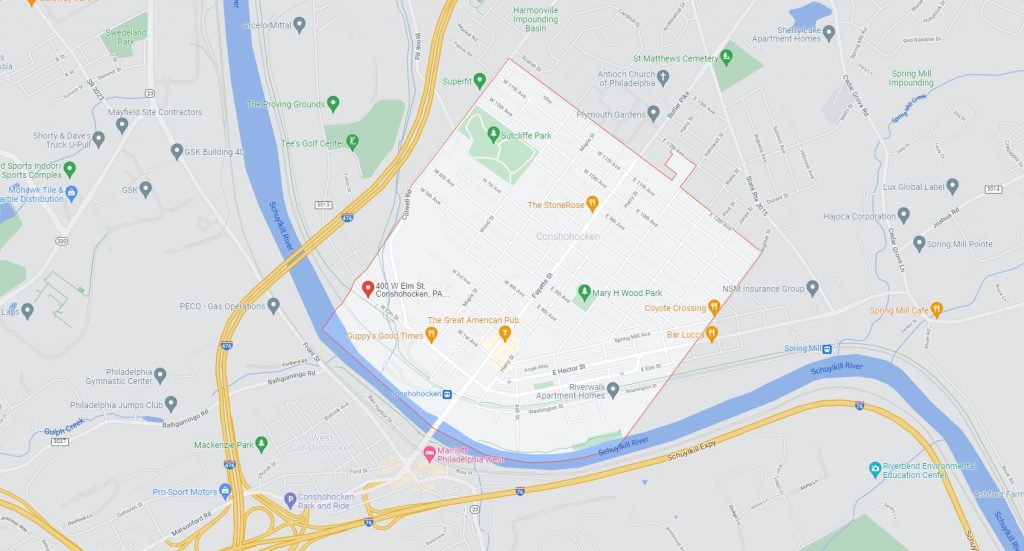
Conshohocken. Credit: Google Maps
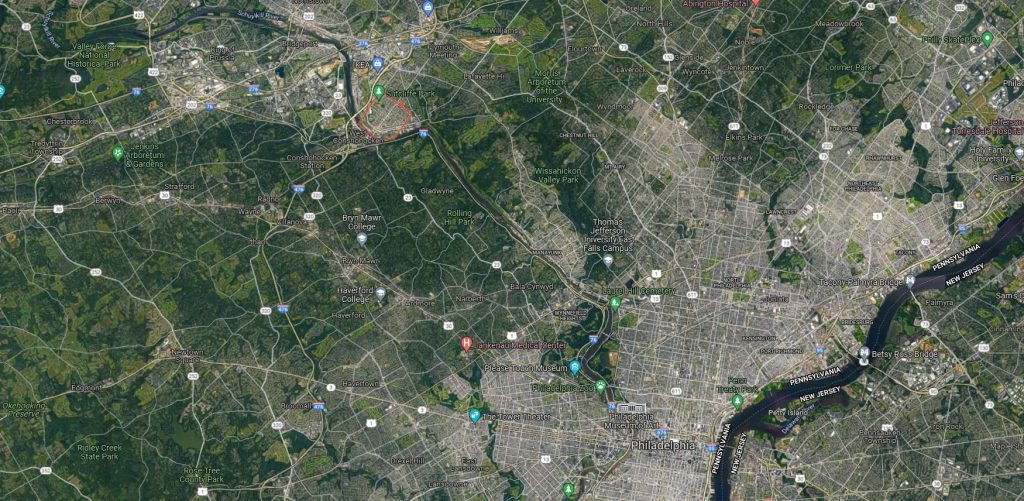
Conshohocken. Credit: Google Maps
Urban Aspirations versus Suburban Realities
In a statement, Joe Mullen, president of Madison Apartment Group, claimed that “high end amenities and service are at the heart of 400 West Elm,” and added that “with sweeping views, a multi-level amenity experience and concierge-level services, 400 West Elm Street elevates suburban living in ways that are completely unique in our marketplace.”
The Business Journal echoes a similar sentiment from Stephen Spaeder, the Senior Vice President of Acquisitions and Development at Equus Capital Partners. BizJournal quotes Spaeder as describing 400 West Elm as a “Center City high-rise in the suburbs” and adding that “no one has done this in 30 years in the suburbs” and that there is an “unmet need in the market for something that is ultra luxury.”
Note that both Mullen and Spaeder state that 400 West Elm will be a departure from suburban living, yet both still emphasize the suburban nature of the locale. However, the two are only partially correct, and that is a good thing.
To elaborate, Conshohocken is difficult to classify as a true suburb, as the town sits somewhere around the middle of the spectrum between traditional urbanity and sprawling suburbia in the classic sense of the word. Officially founded in 1830, Conshohocken is a classic Pennsylvanian small town with a dense urban core, quaint rowhouse streets, and commercial districts that have that authentic “Main Street” feel that suburban malls struggle, typically in vain, to emulate. Its rapid rail connection to Center City Philly would be the envy of just about any suburb.
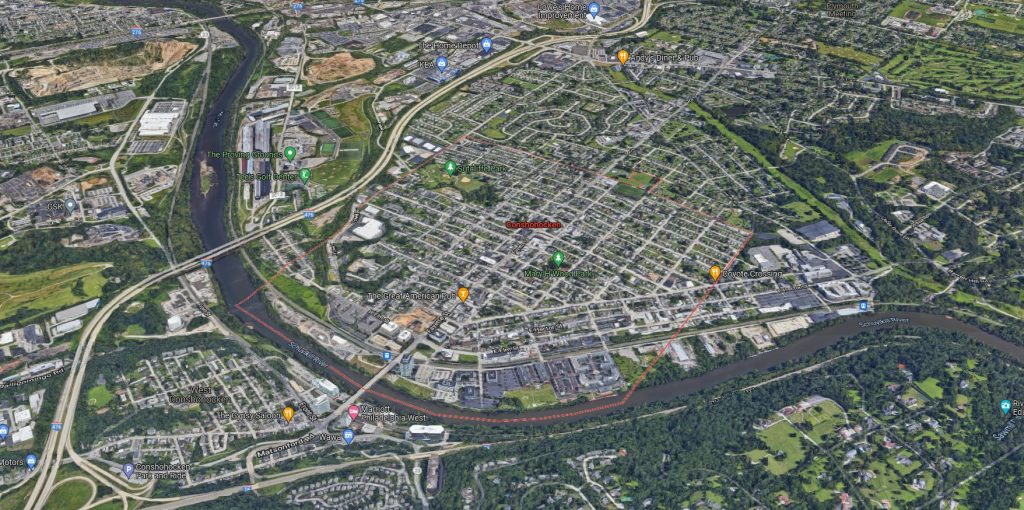
Conshohocken. Looking north. Credit: Google Maps
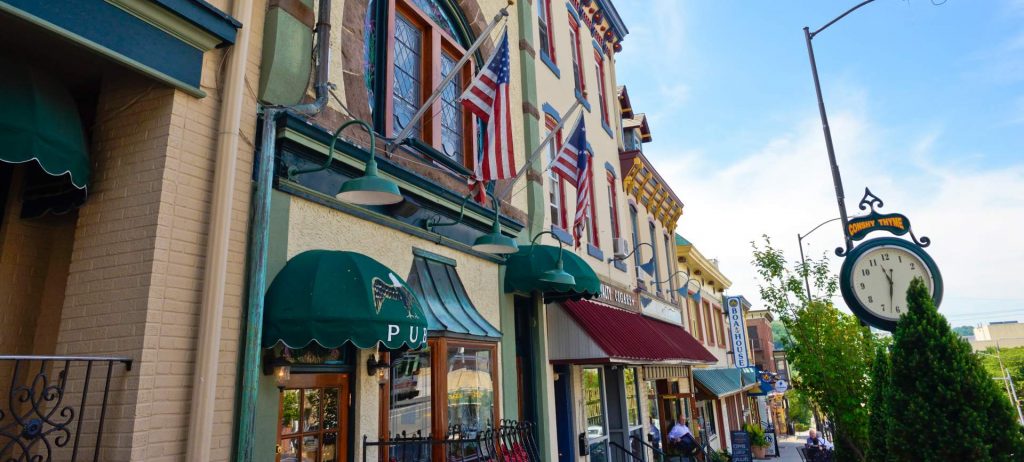
Conshohocken. Credit: Valley Forge Tourism and Convention Board
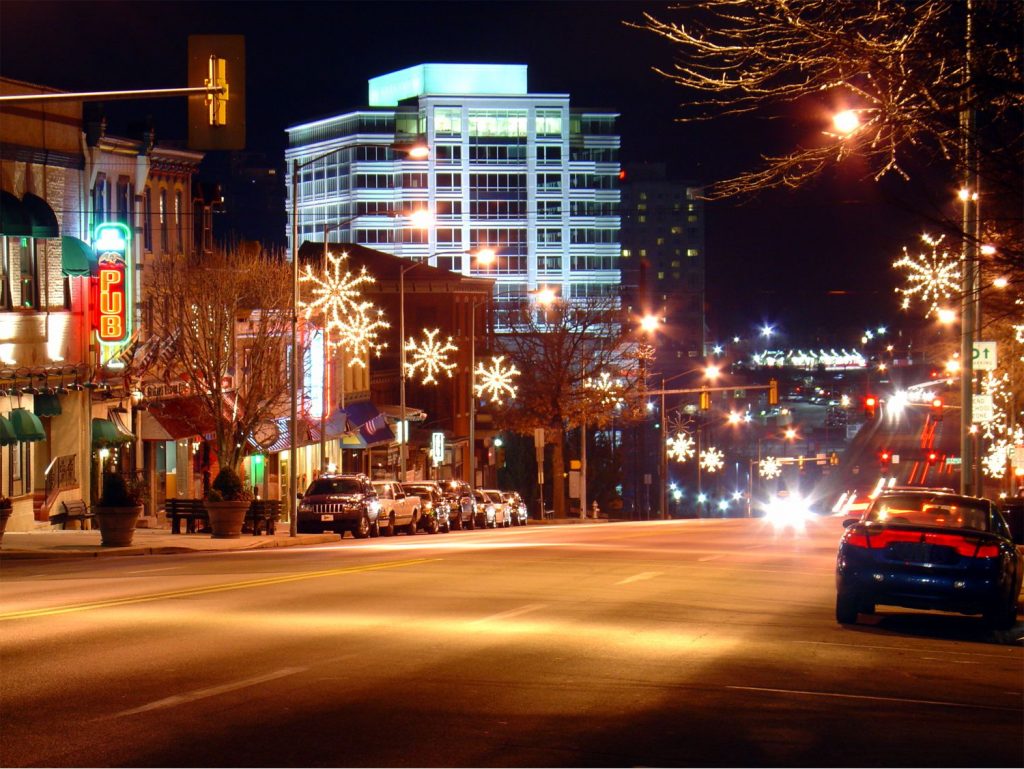
Conshohocken. CreditL Keri Lyn via Pinterest
However, Conshohocken also bears numerous trademarks of suburbanization. After World War II, the town was thoroughly absorbed into the contiguous Philadelphia conurbation, and now finds itself hemmed in between highways, cul-de-sac subdivisions, big box retailers, and country clubs. While the houses are densely-packed, they also feature front lawns and spacious rear yards, and most residents rely on the automobile for their daily needs.
In a sense, Mullen and Spaeder are correct to describe the development as an extension of its suburban environment. The tower will rise from a sprawling, 10-acre site, equivalent to roughly half the footprint of the Philadelphia Conventional Center, which is hardly a densely planned layout. The tower appears to stand far removed from the street and will be accessed via a long driveway.
In addition to green space and residential amenities, the complex will also include a two-story, 189-car garage as well as 250 surface parking spots. The resulting average of 1.25 parking spaces per typical unit is far above that of even the most parking-indulgent luxury developments in the city center.
On the other hand, Mullen and Spaeder also correctly imply that not only is 400 West Elm a return to form for a community firmly rooted in an urban typology, but also a step above and beyond toward a high-rise, fully-serviced, urbane living. 400 West Elm will offer services such as a concierge, package delivery, dry cleaning, pet grooming, and more. A large yard will be equipped with outdoor kitchens. Amenities also include a swimming pool with lap lanes, a fitness center, in-building office suites, a conference room, and private work spaces.
The complex will offer apartments ranging from studios to two bedrooms that will boast luxury finishes, nine-foot ceilings, loggia balconies, walk-in closets, and in-unit washers and dryers.
While the amenity roster bears all the hallmarks of city center luxury living, arguably the most salient, trademark element of urban dwelling sits at the top of the building, where an entertainment lounge will open onto an outdoor roof deck with dramatic views of the surroundings.
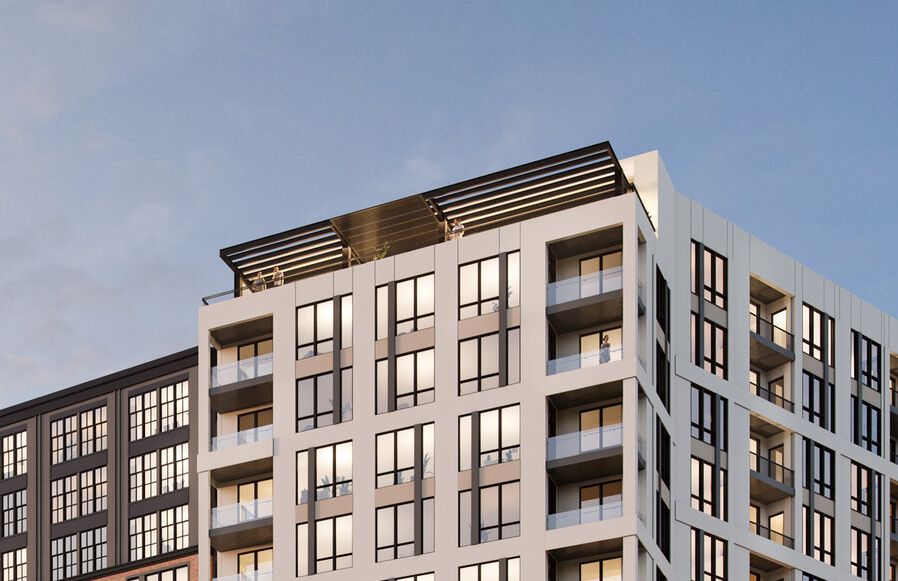
400 West Elm Street. Credit: JDAVIS
Though residents will have ample parking space for a driving commute, they may also opt for an under-ten-minute walk to the nearby train station. The direct 30-minute train ride to Center City Philadelphia offers a more convenient mass transit provision than numerous areas of Philadelphia proper. While suburban design has long disdained railroads as a blighted relic of yesteryear, 400 West Elm, in a true urban fashion, embraces the rail to such an extent that it features nearby passing trains in a prominent fashion on promotional renderings. In addition, bicycle storage will also be available.
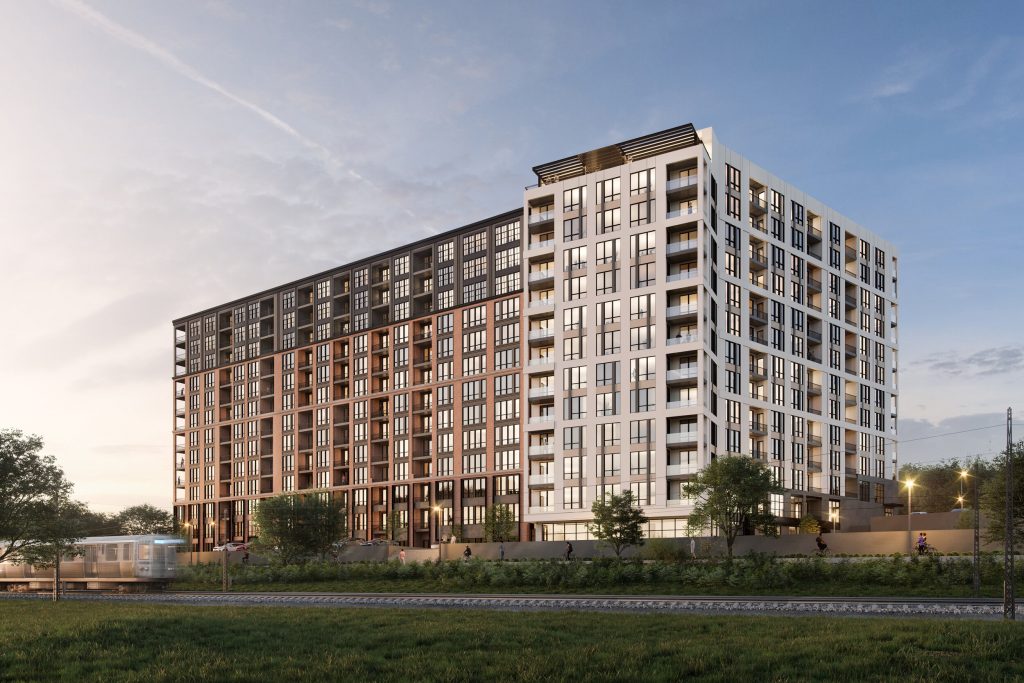
400 West Elm Street. Credit: JDAVIS
Even still, the current development master plan has a distinct mid-century towers-in-a-park vibe, which is not exactly a compliment. In this case, towers-in-ap-arking-lot may be more accurate description. Even for a suburban locale, the sheer acreage of land dedicated to surface lots and un-programmed and minimally accessible green space seems excessive even for a suburban locale, let alone for a waterfront district in a storied, relatively dense old town.
On the positive side, the developers had the foresight to relegate some of the parking space into a multi-story garage. Perhaps, in a later project phase some time in the future, the developers may follow up with an encore, constructing a second high-rise in place of the currently planned parking lot and relegating the parking space into another garage, perhaps one underground, included in the building itself, or both. The project layout would also greatly benefit from extended landscaping, walking promenades, and a retail structure either facing the street or a new plaza.
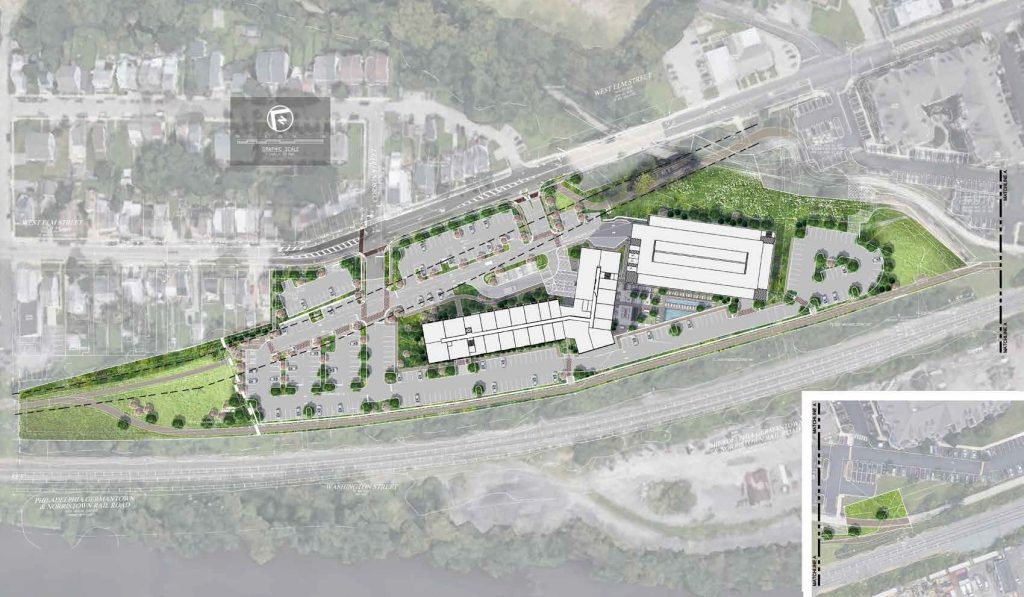
400 West Elm Street. Credit: JDAVIS
Building Design
When we think of a modern downtown skyline, we typically picture a mix of office and residential towers rising above their surroundings. Conshohocken already boasts a budding skyline, yet it is almost exclusively composed of office building. In contrast, 400 West Elm Street will provide the missing residential part of the equation. Standing 134 feet to the top of the main parapet, the high-rise will become one of the town’s tallest buildings, while its 300-foot-plus length will add significant bulk to the skyline.
Even the architectural design exudes an understated self-assurance that may feel more at home on South Broad Street than at its present location, situated within a two-mile radius of at least four golf courses. Conshohocken already boasts a number of dense, mid-rise apartment buildings, mostly constructed in recent years along the waterfront, yet they tend to be styled as gabled Postmodernist pastiche.
By contrast, 400 West Elm Street will sport a streamlined, austere facade. Vertical floor-to-ceiling windows will be set within a curtain wall of white, red, and off-black paneling, opening in regular bays and at the corners for open-air loggia balconies.
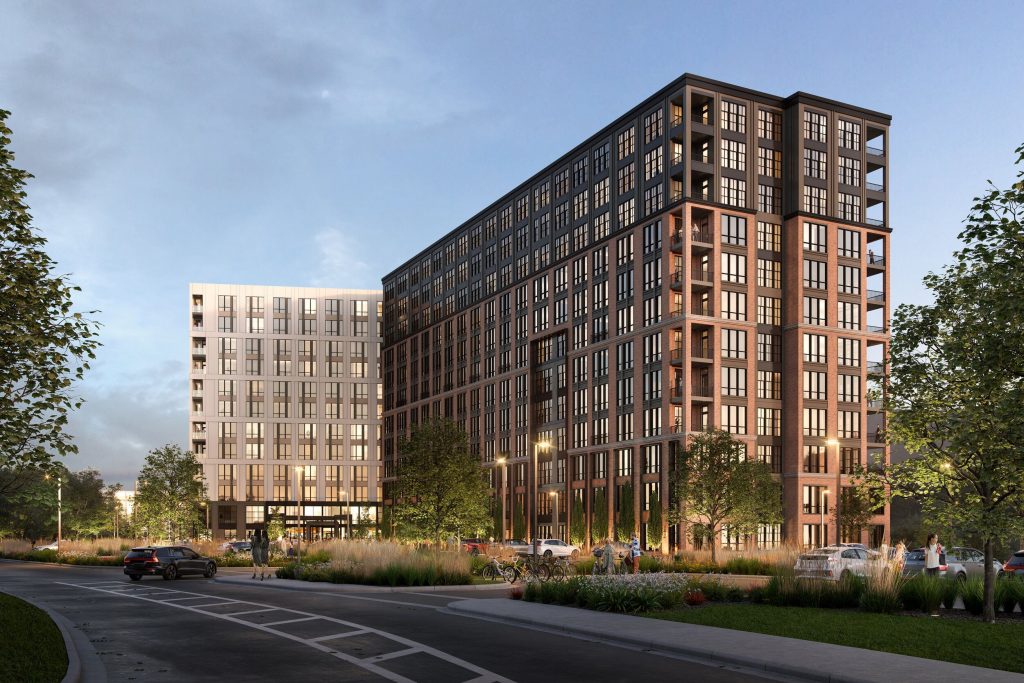
400 West Elm Street. Credit: JDAVIS
Although it is up to debate whether Conshohocken counts as a suburb or not, one factor that clearly plays into the urban side of the argument is its population trends. The postwar years saw a general emptying out of cities around the country, particularly in the Northeast, coinciding with ballooning growth of suburban towns. Conshohocken followed the urban trend in this instance, growing to a record of 10,922 residents in 1950 and then steadily steadily over the decades to a postwar low of 7,589 residents, a drop of nearly one-third of the total.
Numerous cities and towns across the region, Philadelphia included, followed a similar trend. In turn, many of these cities have been experiencing a dramatic revival since the turn of the millennium, particularly over the past ten years. Conshohocken has taken part in this revival, having grown by 3.9 percent by the 2010 census and whopping 17.5 percent by the 2020 census, reaching a growth rate not seen since 1930.
The town’s current population of 9,621 is poised to grow further yet. A new station with high-level platforms will replace the existing Conshohocken Station, which already ranks among the busiest in the network, further boosting the town’s mass-transit service. Numerous developments currently in various stages of progress, largely along the waterfront, promise to add nearly 1,000 new units over the course of the next five or so years. Among these projects, 400 West Elm stands as the most salient manifestation, physical and metaphorical alike, of Conshohocken’s renewed embrace of its dense, transit-friendly roots and provision of a wide range of lifestyles that span from a suburban bungalow to an urbane high-rise.
Subscribe to YIMBY’s daily e-mail
Follow YIMBYgram for real-time photo updates
Like YIMBY on Facebook
Follow YIMBY’s Twitter for the latest in YIMBYnews

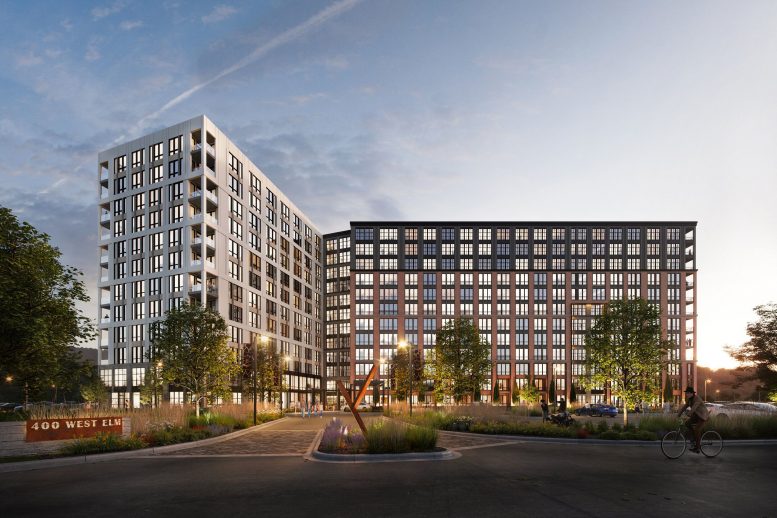
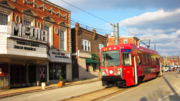
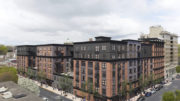
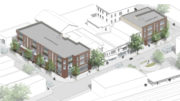
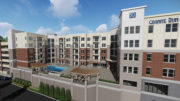
Good write-up
Renter beware. Elm street is a non- stop parade of dumpster, tractor and delivery trucks all day long. The noise and dirt generated by this traffic is insufferable. The decibel level is deafening most of the day. Unless, you are walking getting in and out of these apartments is going to be a cluster f### most of the day. Traffic congestion in that part of Conshohocken is already a nightmare as it is already overbuilt and there is no infrastructure to support it. Also, there should never be 13 of anything let alone an apartment building. Renter – look elsewhere.
The train service is deplorable. Routinely 15 to 20 minutes late. When inclement weather events occur, they shut down with now alternate plan. I’ve been stranded nearly every year.
The surface roads are jammed during the rush hour. 30 to 40 minutes to get 3 blocks at times.
The infrastructure is all but failed and they have already upgraded many aspects like water, but the development is happening faster than they can keep up.
The community is strained and degrading due to the over development, this is just another nail in the coffin. The cannibalization of available space and resources will drive the value down faster than the investors can get out.
“Nobody goes there anymore, it’s too crowded!”
Both of the above comments are 100% accurate. I have lived in Conshohocken for 55 years. I’ve seen the town bust and I’ve see it boom. The powers that be are in over their heads with the inability to admit it or change. The continued development that they allow is unsustainable and will, in my humble opinion, ultimately ruin this town. We are one square mile in area and the infrastructure absolutely cannot support the amount of building that is happening. Literally an hour or more just to get out of town in the morning to work. And Elm Street is one of the worst. Beware.
Disappointed that the article does not address the needs to increase housing affordability opportunities for local workers, and that this development is not providing any form of affordable rental units in its massive structure. Rents have risen 12-17% year over year, and every time a luxury high rise goes up in a place without any shares of affordable housing, people in positions of power are choosing to increase housing instability and homelessness for middle- and lower-income working residents of Conshohocken and Montgomery County. Conshohocken is home to many restaurants and small businesses; workers at these businesses deserve to have the opportunity to live close to where they work. This building will not offer that and will only further economic disparities and gentrification. I support land development and high rises, but only if conversations of affordable housing is a part of that development.
As a lifelong resident this article does not make me happy. It’s unfortunate what happens when developers, investors and the local politicians see nothing but dollar signs. They don’t care about our community its people and there families. We are a small town being ruined by the greed of developers and the local leaders allowing this to happen. No small town charm around here anymore. Shame on you! Those of us who settled here did not sign up for the urban vibe, traffic, high rises, pollution and the rise in crime that is just around the corner. I guess its time to sell and get out of dodge.
Don’t let the door hit you on the way out! Don’t be upset your house is now 5 times its original value, ask yourself why that is. Conshohocken needs life, and I’m glad they are bringing it.
There are many comments from long time Conshy residents complaining about development because a local blog published this story. While everyone is entitled to their opinion, many of their comments are stated as if the whole town agrees with them – which is not the case. Plans to re-develop the town were proposed back in the 60s and 70s, yet everyone is completely shocked that they are being realized. It might help to share where most of these complaints are dead wrong:
– Traffic – yes there is traffic as our society craves automobile ownership, but recent improvements and COVID have helped significantly. I commute daily from Conshy to Berwyn, and it’s a 20 minute trip at peak rush hour. That is reasonable in my opinion. The new oak street crossing and 276 on-ramp in norristown will also be a big improvement. Want less traffic? Perhaps consider living and working in a walkable density-rich town like… say Conshohocken?
– All of the land is being built on! This is terrible for the environment! General suburbia is 10X worse for the environment compared to a city with no suburbs.
– Property values will plummet! Nope, they are rising because high paying jobs are going into those buildings you hate.
– Pollution! Is it from the car obsession referenced above? Or is it the new buildings going up over former brownfield sites?
– No small town charm! It was never a small town… density of the town was always around 10,000 / sq mile. The town is becoming even more charming as business owners are profiting from the new improved demographics and improving their business environments.
– I didn’t sign up for the urban vibe! Again – plans for re-development have been in place since the 70s. The town was urban back then too!
– Politicians are crooked! Nope, you just didn’t vote for them. Developers are simply building on approved zoning… created in the 70s!
– The development will lead to homelessness! I’ve yet to see a homeless person in Conshy, and I live on E Elm st.
– The infrastructure is terrible! Nope. sewer upgraded a few years ago, storm run-off improved significantly, well funded school district, clean air outside of fayette st. Oh and there’s a regional rail line that gets you downtown in 35 mins.
Keep complaining folks!
Perfectly said. Any lifelong Conshy resident should have seen the writing on the wall a long time ago. They want to complain, but when they “get out of dodge” and sell their house for 3-5x its original value, you won’t hear a peep. I can’t wait to see a new look Conshohocken.